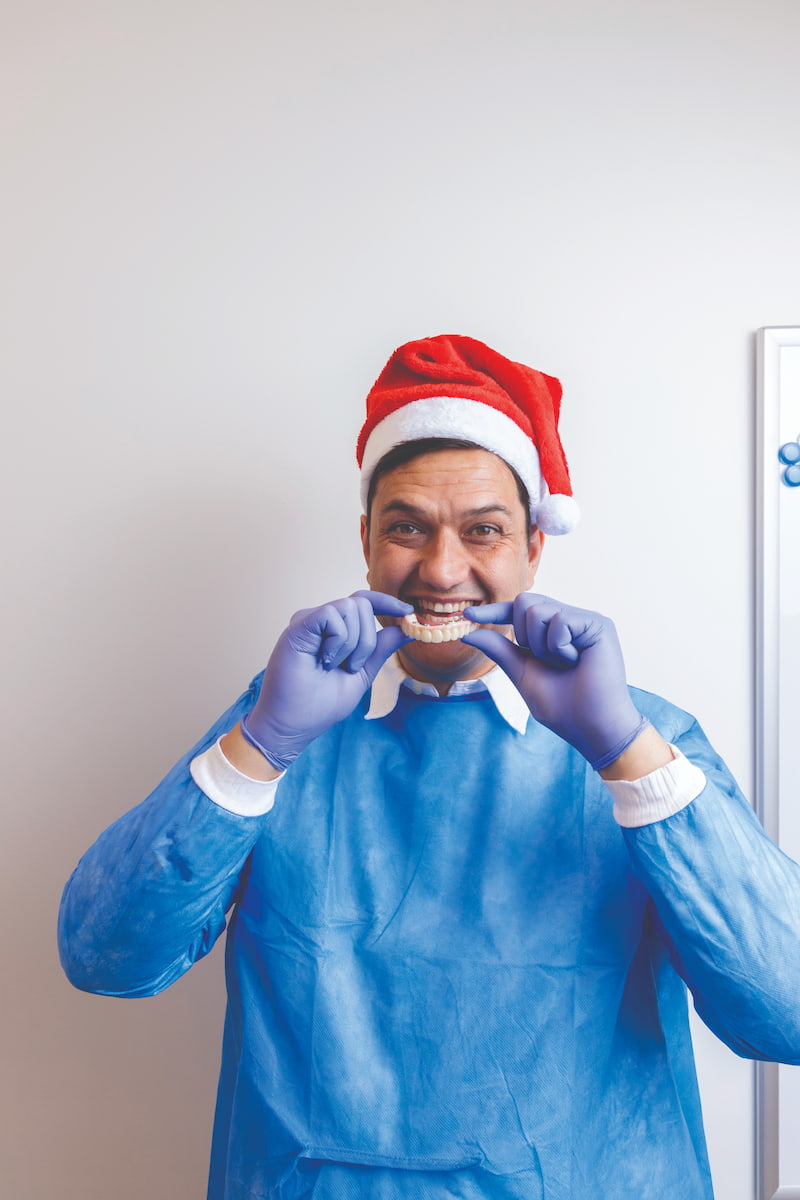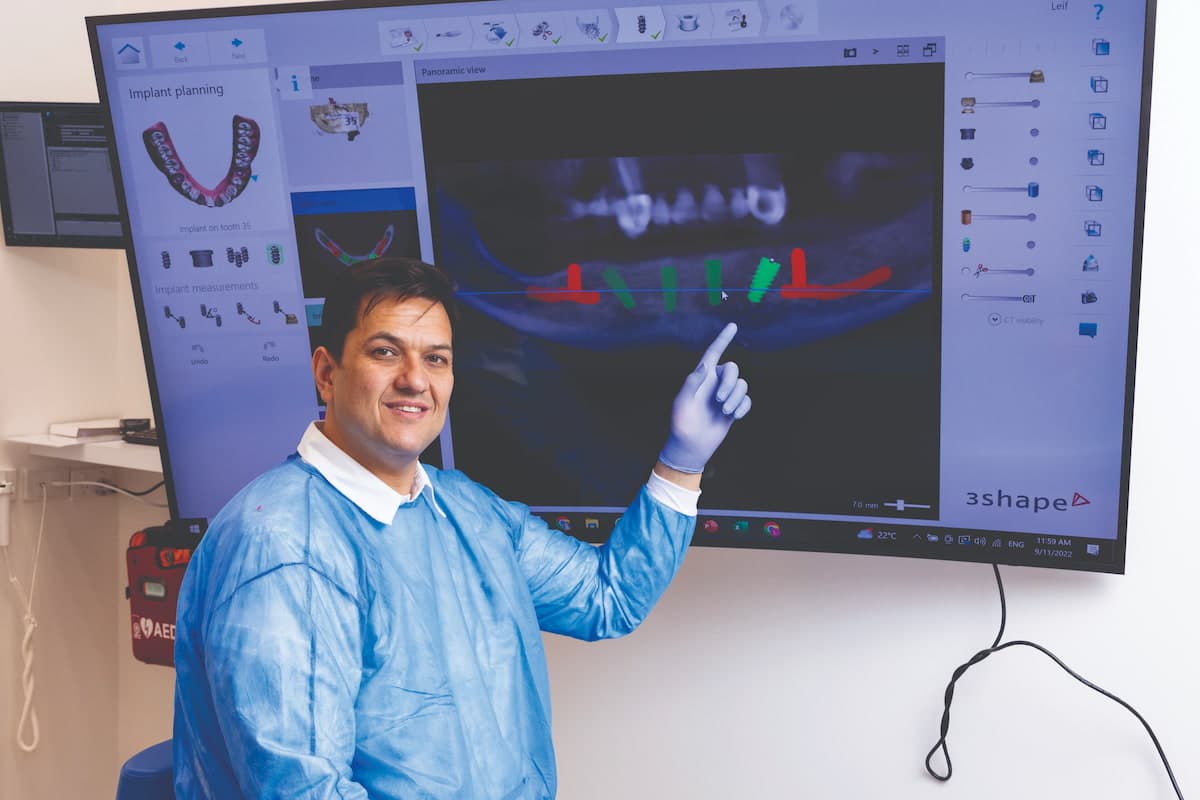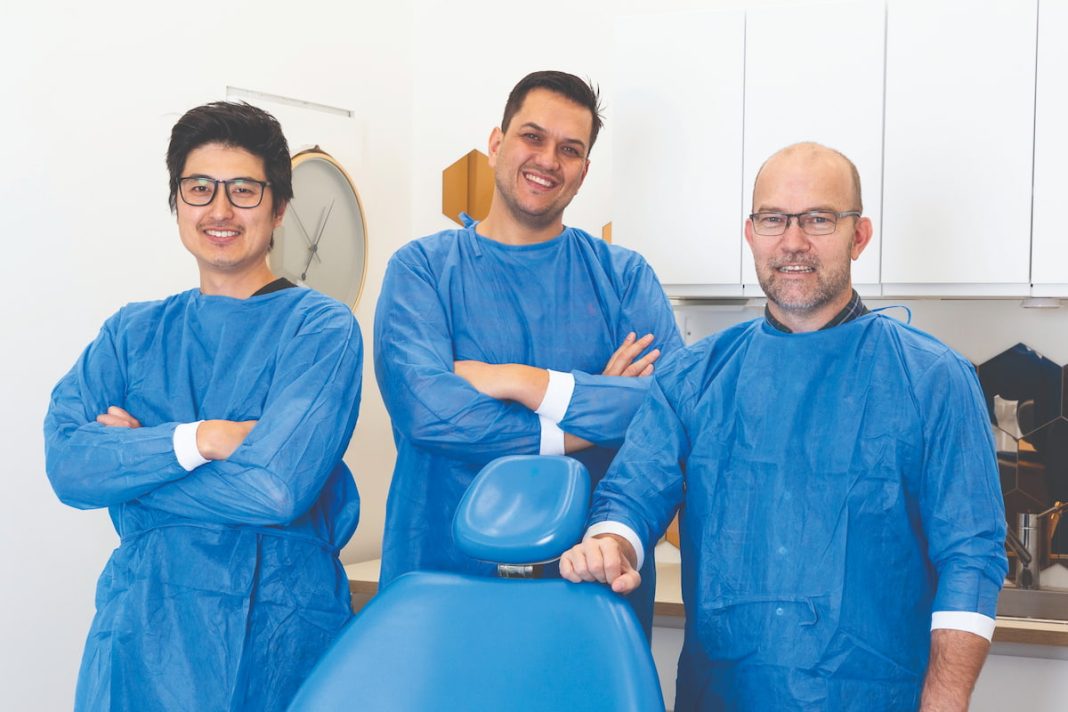This time of year, you might hear the phrase, ‘All I want for Christmas is my two front teeth’ … but what if you could get all new teeth instead? Is a new smile possible in as little as one day?
With new digital scanning technologies, the answer is YES! Dr Garth Jones outlines how dental implant treatment using digital scanning technology can help people who experience tooth loss or have previously suffered from tooth loss. Dr Jones explains who can benefit from this type of treatment, and how it can help to improve your ability to eat, and give you back that confident smile. It’s important to highlight that each person needs to be assessed by a dental professional to determine whether this is the most appropriate treatment in their individual circumstances.
Smile in a day with dental implants!
With the arrival of dental implants, a variety of options have opened for people suffering with tooth loss and decay. A dental implant is the closest thing dental professionals can offer as replacement for healthy teeth. For people who are suffering from significant dental disease, there are a variety of implant solutions available.
You may have heard of the phases ‘All-On-4’ or ‘All-on-X’ tooth solutions, but what do they really mean? In short, an ‘All-on-4’ or ‘All-on-X’ treatment means that a patient who either has missing or failing teeth has four or more implants in either the upper or lower jaw. These implants can then be used to support a row of teeth which are permanently fixed into position. Whilst this process can occur in one day, there is often weeks of planning involved to ensure implants are placed in the best bony positions, and the row of teeth achieves the smile that the person is looking for.
So what is the process for a new smile?
Step 1: Appointment 1 – Information gathering (approximately 30 to 40 minutes)
The dental professional will look at the patient’s medical history, digital tooth and gum scans, facial photographs, 2D X-rays, and most importantly a 3D X-ray called a Cone Beam CT scan. The dental practitioner will talk to the patient to understand what they want to achieve, and their unique suitability for dental implants – including the best course of treatment for individual circumstances and costs associated.

If the person is deemed a suitable candidate for digital dental implant treatment, they will be provided with a treatment plan and quote, which is a good time for the patient to ask any further questions. An appointment can then be booked for treatment, which can also be offered using intravenous sedation or general anaesthetic if the patient feels more comfortable having treatment with enhanced comfort. Antibiotics, antiseptic mouth rinses, and good oral hygiene prior to dental implant surgery are necessary and will be prescribed once an appointment for the surgery is made. The surgery can last up to three hours if both upper and lower jaws are involved. Relevant information pamphlets and consents are also discussed.
Step 2: Planning (Between Appointments 1 and 2)
The planning stage is essential in preparing for the implant surgery appointment. Planning includes developing a digital plan for the implant surgery, working closely with the digital scans and X-rays to map the best implant size and positions to place the implants. 3D printing a surgical guide for the dental surgeon to use on the day of surgery is done to ensure the implants are placed in the correct positions. It is necessary to work closely with the dental laboratory to prepare the row of teeth that will be secured to the dental implants. Colour, shape, and size of teeth are all discussed and selected appropriately according to a patient’s preferences. The clinic preparations and communications and planning with the are often completed in seven to 10 days prior to the surgery.
Step 3: Appointment 2 – Dental implants and ‘Nice New Teeth’
The big day has now arrived. The dental surgeon will start by talking to the patient about the procedure, after care, pain management and answer any further questions Depending on the type of anaesthetic administered, there may also be a doctor to talk to about the anaesthetic process and any concerns the patient may have.
Numbing of the jaw and mouth occurs after the anaesthetic is administered, so there is no anxiety involved with this process. Being comfortable and pain-free is of the highest priority. The dental surgeon then removes the failing teeth and dental implants are placed, with X-rays taken to confirm that the final positions of the implants are satisfactory.
The ‘Nice New Teeth’ are now connected to the patient’s dental implants. A three-to-four-month healing period and a soft food diet is required to help preserve the newly placed dental implants. After the healing period has passed, a second and permanent set of ‘Nice New Teeth’ can be organised and placed using several digital solutions and technologies.
Step 4: Appointment 3 – The post procedure review appointment (2 weeks after surgery)
At this appointment, the dental surgeon checks to see how healing is progressing and whether there are any concerns. This appointment is generally short and gives the patient an opportunity for any questions to be answered.
Step 5: Appointment 4 – Digital scanning and photos (approximately 3-4 months after surgery)
There is no longer a need for a mouth full of goo to take a dental impression. Digital technologies are making the recording process more comfortable and more accurate than ever before. Now scanning technologies allow for quicker and less messy recording of vital information. At this appointment, the dental surgeon will take digital scans and photos in preparation for the final new teeth.
Step 6: Appointment 5 – Fit-in check of final teeth (approximately 4-5 months after surgery)
At this appointment, the dental surgeon will place a digitally printed copy of the final teeth. They remove the temporary teeth and attach the final permanent teeth. Now is the time to get those features right for the long term. Following feedback (often with the welcome help of a family member or friend), the temporary row of teeth is sent to the dental laboratory for any further changes and final production. Sometimes, if the changes are quite significant, the dental surgeon will produce one more set of temporaries for the patient to try and check they are absolutely happy.
Step 7: Appointment 6 – The FINALE!
At this appointment, the dental practitioner will insert the final ‘Nice New Smile’. This might be made of porcelain or even a super hard acrylic material. The temporary teeth will be removed one last time and the final permanent teeth are placed into position. The dental practitioner will make some adjustments to make sure the bite is working well with the new teeth. They will then explain how to keep the new teeth clean and talk through how frequently their new teeth should be maintained, which is usually every four to six months.

Some frequently asked questions:
Q: Do I get teeth in a day?
A: Yes, but it requires planning by the dental surgeon. The final teeth, however, will take a few months once the implants have well healed into the bone.
Q: Will I have pain or discomfort following the implant surgery?
A: A script for pain medication is given at the appointment when the dental implants are placed. The dental surgeon will explain what else to do to minimise any discomfort, including the use of cold packs and rest.
Q: What materials are the temporary teeth made from?
A: The teeth implants that are placed will be made of a very tough acrylic. They will look lovely, but they are a temporary bridge that will be worn until all your implants have healed into position.
Q: What is the final bridge made from?
A: The final bridge is usually made of either porcelain or acrylic. It’s quite common to have a strengthening piece of titanium inside the bridge to keep it light but also strong.
Q: How long is the wait on these implant treatments?
A: At Affordable Implants and Dentures, we would generally get you in for your first consult within a few days of enquiry and then, if you are a suitable candidate, surgery can generally commence in a week or two from there.
Call Affordable Implants and Dentures for a free implant or denture consultation on 6190 8828.
For more information on sponsored partnerships, click here.



